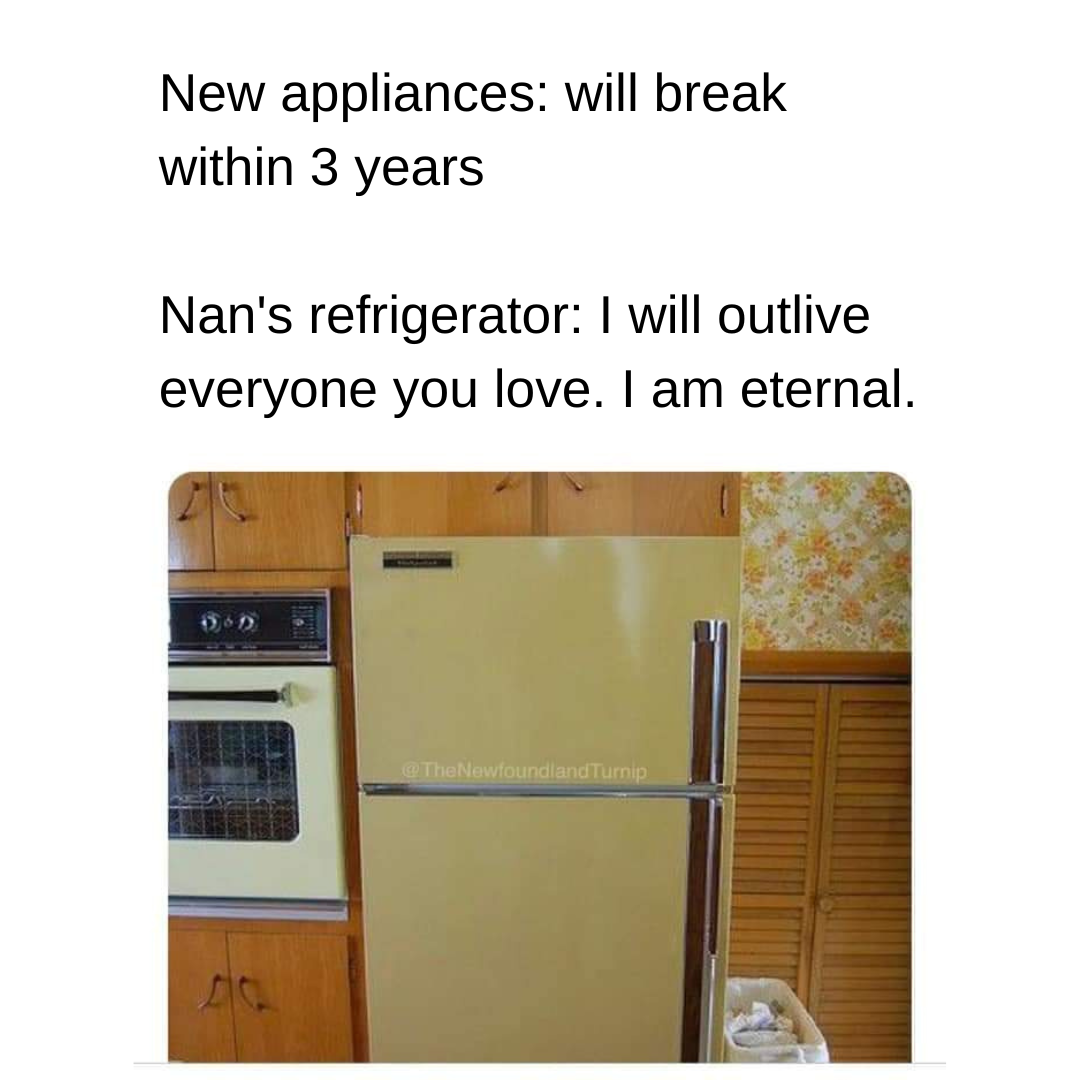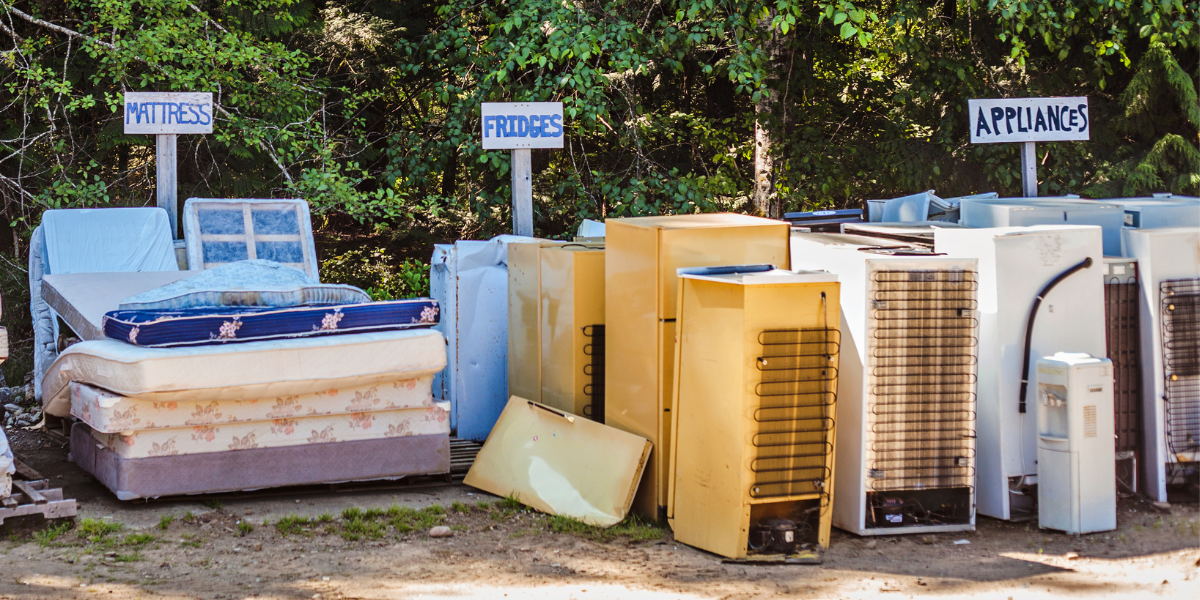Are New Appliances Designed to Fail?
Things aren’t built like they used to be...
Major appliances are a major part of the home, from keeping your food cold to your clothes clean. When one breaks down, it can throw off your whole day, week, or even month depending on how long a repair or replacement takes. If it seems like household appliances lasted longer “back in the day” you’re not entirely wrong. Modern appliances are made differently, with the tradeoff being improved efficiency for longevity. Is it worth it? Are today’s appliances being designed with built-in obsolescence? We look into the details, along with providing you tips to get the most out of your machines.

Old Vs New Appliances
Household appliances were most definitely built differently in the past. Mid-century appliances often lasted decades, some are even still running today. However, these machines were energy hogs, bulky in size and weight, and expensive to purchase. An old washing machine would use 50 gallons of water for a load, whereas today they only use 15 gallons. Similarly, a dishwasher previously took 10 gallons of water whereas a modern dishwasher can use as little as three gallons to achieve the same results. A side-by-side comparison of electrical usage would have similar results. Yes, grandma’s fridge is still running, but how much is she paying each year for it?
Over the decades, efficiency standards have evolved, and manufacturers have needed to redesign their products to meet federal regulations. Machines that were largely mechanical in operation now depend on numerous electronic components. Manufacturers have also found various ways to keep their costs down. From outsourcing components to using lighter materials to save on shipping weight, many of these cost savings have actually been passed on to the consumer. A study from the American Enterprise Institute found that the purchase price of an average home appliance is three times more affordable than they were in the 1980s. The "Good Ol Days" are Now This doesn’t even factor in the utility bill savings a family would see using a more energy efficient model. These cheaper and more efficient machines do come at a cost, however, and that is their reliability.
So, Are New Appliances Designed to Fail?
Modern-day appliances do have a shorter lifespan than their predecessors. This is partly due to consumer demand. We want modern technology, at the lowest price, and we want it NOW. Something has to give in that equation, and unfortunately, it tends to be the quality and lifespan of the machines.
According to our repair tech expert Chris, some of these upgrades are functional and in line with the times—such as replacing old-school mechanical timers with more sophisticated control boards, replacing thermostats with sensors, and replacing coils with radiant elements. While these improve the function and efficiency of our appliances, they are generally more complex. And with more complexity comes more opportunity for failure.
Is this indicative of manufacturers designing with obsolescence in mind, or are they simply trying to keep up with consumer demand and ever-changing technology? It is likely a bit of column A and a bit of column B. The modern-day consumer wants the newest features, and the manufacturers keep designing new products with them. Customers want to pay a lower price, so companies need to cut costs to achieve that. Ultimately this results in appliances that aren’t as sturdy, well-built, or reliable as the humble machines of days gone by.

How to Make Modern Machines Last
We asked Chris what steps he would take, as an appliance repair technician, to ensure that he gets many years out of his household appliances. These are the steps he recommends to reduce any future complications or headaches.
- Read the owner’s manual to ensure you’re using the machine correctly. The more you mistreat your appliances, the more likely you are to face the consequences. A service like the Fix App is a great resource for keeping all your household manuals in one place so you can easily access them.
- Do your research before buying! A new feature may sound great but read reviews and be sure what you’re signing up for. Will this new feature improve your use of the machine and make life easier? Or will constantly repairing not be worth it?
- Always register your new appliances with the manufacturer—this is important! You’ll be happy you took the time if a problem pops up under warranty. Having your appliance registered is massively helpful. And remember, your warranty begins on the delivery date, NOT your purchase date or the first day you use the appliance.
- Once you take possession of a new appliance, immediately open the box and inspect it for damage. You typically have 48 hours to report issues.
- Consider extended warranty options at the time of purchase. You may hope that you wouldn’t need it and may not want to spend the extra money, but it may just save you a significant amount of money down the road.
- If you need service after the warranty period, you have the option to fix any problems yourself. We’re here to help you with a huge library of expert-led DIY repair videos, in-depth guides, and genuine OEM replacement parts. A DIY repair can save you both time and money along with extending the lifespan of your appliance.
- If you do need to call a service person, do your research on them and their company. Again, reviews are your friend here. Not all technicians are created equal; look for a servicer who also does warranty work for the brand you’re having issues with.
- Keep your appliances clean. Yes, the dishwasher cleans the dishes, and the washing machine cleans your laundry, but YOU need to clean the cleaners. Many times, an issue with an appliance is due to user error or neglect. Regular cleaning and inspection of your appliances can help ensure they last as long as possible.
While it’s true that things aren’t built like they used to be, this isn’t necessarily a bad thing. Modern appliances are way more efficient, and much less expensive to purchase and operate. While new features and technologies can make life easier, they do shorten the lifespan of the product. The more electrical components, the more opportunities for something to go wrong. However, these shortcomings are the result of consumer demand; we literally asked for it, and the manufacturers delivered. Remember, just because a component of your machine has failed, doesn’t mean you need to send it to the curb. The world of do-it-yourself repair can be a rewarding and cost-saving experience for those willing to try.
